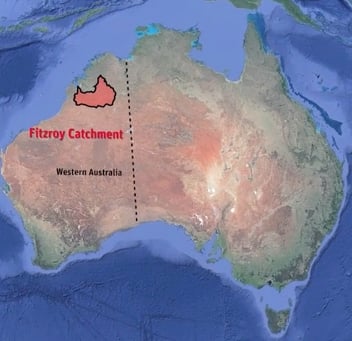Federal budget prepares for drought
The National Water Grid is set to receive $258 million to help fund new dams and irrigation projects in a bid to help Australian communities prepare for future droughts, according to the 2021-2022 Federal Budget report.
Australian Treasurer Josh Frydenberg delivered the 2021-2022 federal budget on Tuesday 11 May, detailing a raft of economic initiatives focused on supporting Australia’s recovery following the COVID-19 pandemic.
Preparing for future droughts and ensuring water availability are a key focus of the budget, with the government committing millions towards water security works within Australian regions.
“The government’s $5 billion Future Drought Fund is helping farmers prepare for future droughts,” the budget report says.
“This budget includes $103 million to help farmers and communities develop risk management and regional resilience plans to better prepare for future droughts. A further $59.5 million will help farmers harness new technologies and farming practices.”
With Australian farmers and regional communities facing more severe droughts, the budget aims to secure future water supplies by investing further in the National Water Grid.
“Australia’s farmers need reliable water sources to keep growing our food,” the report says.
“Through the $3.5 billion National Water Grid Fund the Government is providing $258 million to fund new dams and irrigation projects, including accelerated pathways to get small-scale water infrastructure done, including in Eurobodalla, Werribee, Warwick and the Bellarine.
“This will ensure local communities and farmers have secure water supplies into the future.”
Deputy Prime Minister and Minister for Infrastructure, Transport and Regional Development Michael McCormack said the federal government will invest $75.7 million towards an additional four new construction projects aimed at increasing water security.
“This will deliver increased water security, build resilience in our regions, deliver jobs and grow our critical agriculture sector,” he said.
“This ongoing investment in water infrastructure builds on the eight construction projects already completed since our establishment of the National Water Grid Authority in late 2019, bringing the total number of construction projects in the investment pipeline to 30.”
State projects
The new and augmented construction projects being funded in partnership with states include:
- Eurobodalla Southern Storage, New South Wales: $51.2 million
- Werribee Irrigation District Modernisation, Victoria: $11.0 million
- Recycled Water on the Bellarine, Victoria: $5.5 million
- Warwick Recycled Water for Agriculture, Queensland: $0.5 million
“Based on current climate projections, future average annual rainfall in the Eurobodalla region is likely to be lower than in the past. Without action, local businesses and residents could face increasing water restrictions,” the report says.
“Working with New South Wales and the Eurobodalla Shire Council, the government is building a new dam to ensure residents and farmers can access secure water supplies for years to come.
“This will benefit the region’s 3300 tourism jobs and support dairy, beef and oyster farming.
The dam will ensure water provision for emergency services and the new hospital.”
McCormack said the investments will continue to help increase water security in areas where extensive irrigated agriculture already exists, while also helping to unlock new agricultural regions, especially in Australia’s north.
“We are delivering on building bigger water infrastructure and we will also deliver on the smaller scale infrastructure projects which promote local economic activity and job creation,” he said.
“This is building on progress already underway right across Australia with projects such as Rookwood Weir construction and Urannah Dam business case in Queensland; the commencement of the Phase 2 of the Macalister Irrigation District modernisation project in Victoria and the completion of the business case for the Don Irrigation Scheme in Tasmania.”
In addition to boosting funding for the National Water Grid scheme, the Federal Government will focus on helping Murray‑Darling Basin irrigators better understand future water availability and plan for drought and flooding.
“Farmers will be able to access new technology that will integrate water models across the whole basin,” the report says.
The budget also focuses on lowering emissions to help tackle climate change, with the federal government set to invest $20 billion in new and emerging technologies by 2030.
This funding will be focused on establishing international partnerships on practical low emissions projects and supporting additional hydrogen hubs, as well as accelerating the development of Carbon Capture Use and Storage.
“The government is also investing $316.7 million to help businesses and industry lower their emissions by supporting more voluntary action and helping businesses reduce their energy use,” the report says.
Australian Water Association (AWA) Chief Executive Corinne Cheeseman said “AWA welcomes the investment in water infrastructure in the 2021-2022 federal budget. Improving water security and resilience in our regions is crucial to ensure a sustainable water future for Australian communities.”

